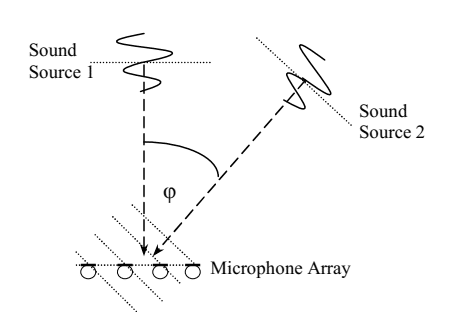Including hearing protection is a requirement for modern helmet designs for military personnel. The sound waves generated by gun fire and mortar blasts can cause short-term hearing injuries and long-term hearing damage. The drawback of hearing protection (active, passive, in-the-ear, over-the-ear) is the reduction of auditory situational awareness. With open ears, humans are able to locate sound sources through binaural cues, such as the interaural level difference (ILD) and the interaural time difference (ITD). The shape of the helmet itself and the modification of the sounds by the hearing protection can distort the soldier’s perception on the location of gunshots in the battlefield environment.
The first step to restore this information to the solider is to algorithmically determine where the sound is coming from. Equipping a helmet with a microphone array allows an algorithm to perform the same operations that our brains do to determine the location of the source. By estimating the time difference of arrival between microphone pairs, the direction of arrival information can be derived. This information then can be displayed as a visual cue for helmets with augmented reality capabilities or can used to generate head-related transfer function (HRTF) directional filters for spatial audio rendering.

The additional challenge of sound localization on a helmet microphone array as compared to standard planar microphone array is that the shape of the helmet does not allow for each microphone to have direct line of sight to sound sources from all angles. The propagation of the sound across the surface of the helmet needs to be modeled and incorporated into the design of the sound source localization algorithm.
VOCAL Technologies offers custom designed solutions for sound source localization. Our custom implementations of such systems are meant to deliver optimum performance for your specific signal processing task. Contact us today to discuss your solution!